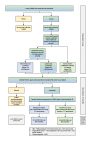Protocol for a cohort study of adolescent mental health service users with a nested cluster randomised controlled trial to assess the clinical and cost-effectiveness of managed transition in improving transitions from child to adult mental health services (the MILESTONE study)
- PMID: 29042376
- PMCID: PMC5652531
- DOI: 10.1136/bmjopen-2017-016055
Protocol for a cohort study of adolescent mental health service users with a nested cluster randomised controlled trial to assess the clinical and cost-effectiveness of managed transition in improving transitions from child to adult mental health services (the MILESTONE study)
Abstract
Introduction: Disruption of care during transition from child and adolescent mental health services (CAMHS) to adult mental health services may adversely affect the health and well-being of service users. The MILESTONE (Managing the Link and Strengthening Transition from Child to Adult Mental Healthcare) study evaluates the longitudinal course and outcomes of adolescents approaching the transition boundary (TB) of their CAMHS and determines the effectiveness of the model of managed transition in improving outcomes, compared with usual care.
Methods and analysis: This is a cohort study with a nested cluster randomised controlled trial. Recruited CAMHS have been randomised to provide either (1) managed transition using the Transition Readiness and Appropriateness Measure score summary as a decision aid, or (2) usual care for young people reaching the TB. Participants are young people within 1 year of reaching the TB of their CAMHS in eight European countries; one parent/carer and a CAMHS clinician for each recruited young person; and adult mental health clinician or other community-based care provider, if young person transitions. The primary outcome is Health of the Nation Outcome Scale for Children and Adolescents (HoNOSCA) measuring health and social functioning at 15 months postintervention. The secondary outcomes include mental health, quality of life, transition experience and healthcare usage assessed at 9, 15 and 24 months postintervention. With a mean cluster size of 21, a total of 840 participants randomised in a 1:2 intervention to control are required, providing 89% power to detect a difference in HoNOSCA score of 0.30 SD. The addition of 210 recruits for the cohort study ensures sufficient power for studying predictors, resulting in 1050 participants and an approximate 1:3 randomisation.
Ethics and dissemination: The study protocol was approved by the UK National Research Ethics Service (15/WM/0052) and equivalent ethics boards in participating countries. Results will be reported at conferences, in peer-reviewed publications and to all relevant stakeholder groups.
Trial registration number: ISRCTN83240263; NCT03013595 (pre-results).
Keywords: Europe; child and adolescent mental health services; cluster randomised controlled trial; health services research; longitudinal cohort study; mental health; transition; youth mental health.
© Article author(s) (or their employer(s) unless otherwise stated in the text of the article) 2017. All rights reserved. No commercial use is permitted unless otherwise expressly granted.
Conflict of interest statement
Competing interests: PS is the director and shareholder of HealthTracker. FCV publishes the Dutch translations of ASEBA, from which he receives remuneration.
Figures


Similar articles
-
Managing the link and strengthening transition from child to adult mental health Care in Europe (MILESTONE): background, rationale and methodology.BMC Psychiatry. 2018 Jun 4;18(1):167. doi: 10.1186/s12888-018-1758-z. BMC Psychiatry. 2018. PMID: 29866202 Free PMC article.
-
Validation of the Transition Readiness and Appropriateness Measure (TRAM) for the Managing the Link and Strengthening Transition from Child to Adult Mental Healthcare in Europe (MILESTONE) study.BMJ Open. 2020 Jun 23;10(6):e033324. doi: 10.1136/bmjopen-2019-033324. BMJ Open. 2020. PMID: 32580979 Free PMC article. Clinical Trial.
-
Protocol for the development and validation procedure of the managing the link and strengthening transition from child to adult mental health care (MILESTONE) suite of measures.BMC Pediatr. 2020 Apr 16;20(1):167. doi: 10.1186/s12887-020-02079-9. BMC Pediatr. 2020. PMID: 32299401 Free PMC article.
-
Outcomes of young people who reach the transition boundary of child and adolescent mental health services: a systematic review.Eur Child Adolesc Psychiatry. 2019 Nov;28(11):1431-1446. doi: 10.1007/s00787-019-01307-7. Epub 2019 Mar 8. Eur Child Adolesc Psychiatry. 2019. PMID: 30850925 Free PMC article.
-
[Transition from child and adolescent to adult mental health care].Rev Med Brux. 2018;39(1):35-40. doi: 10.30637/2018.17-043. Rev Med Brux. 2018. PMID: 29528597 Review. French.
Cited by
-
The black hole of the transition process: dropout of care before transition age in adolescents.Eur Child Adolesc Psychiatry. 2023 Jul;32(7):1285-1295. doi: 10.1007/s00787-021-01939-8. Epub 2022 Jan 20. Eur Child Adolesc Psychiatry. 2023. PMID: 35048161 Free PMC article.
-
Economics and mental health: the current scenario.World Psychiatry. 2020 Feb;19(1):3-14. doi: 10.1002/wps.20692. World Psychiatry. 2020. PMID: 31922693 Free PMC article.
-
Transition as a topic in psychiatry training throughout Europe: trainees' perspectives.Eur Child Adolesc Psychiatry. 2020 Jan;29(1):41-49. doi: 10.1007/s00787-019-01309-5. Epub 2019 Mar 9. Eur Child Adolesc Psychiatry. 2020. PMID: 30852723
-
Discharge pathways and relapse following treatment from early intervention in psychosis services.BJPsych Open. 2018 Aug 30;4(5):368-374. doi: 10.1192/bjo.2018.50. eCollection 2018 Sep. BJPsych Open. 2018. PMID: 30202598 Free PMC article.
-
Cohort profile: demographic and clinical characteristics of the MILESTONE longitudinal cohort of young people approaching the upper age limit of their child mental health care service in Europe.BMJ Open. 2021 Dec 16;11(12):e053373. doi: 10.1136/bmjopen-2021-053373. BMJ Open. 2021. PMID: 34916319 Free PMC article.
References
-
- McGorry PD. The specialist youth mental health model: strengthening the weakest link in the public mental health system. Med J Aust 2007;187:s53–6. - PubMed
Publication types
MeSH terms
Associated data
LinkOut - more resources
Full Text Sources
Medical
